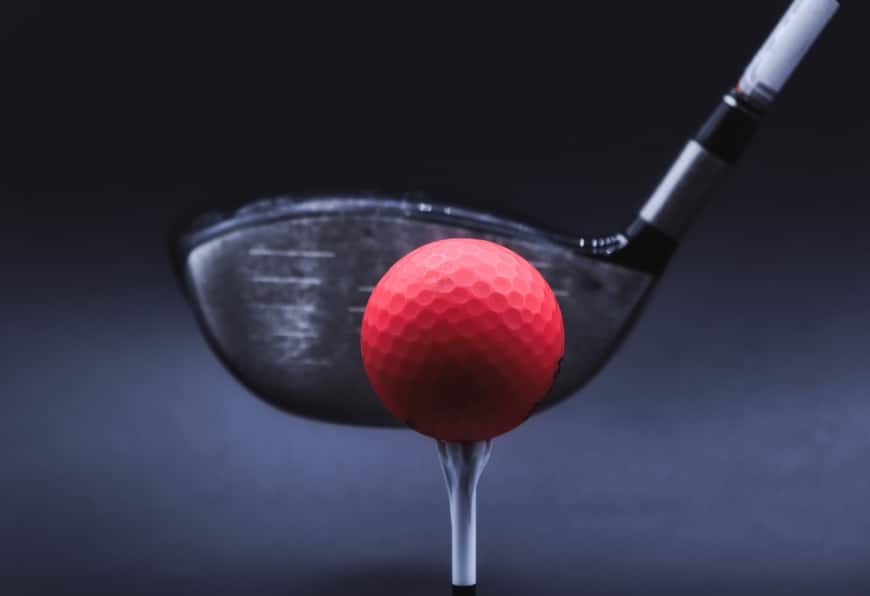Do you only need one driver in every game? But what do you think is better between a 9 vs. 10.5-degree driver? Whether a beginner, an amateur, or a professional player: they need the proper loft of a golf club depending on skill.
A 10.5-degree driver is the best choice for most golfers, especially those with higher skills. The 9-degree driver, on the other hand, is better for beginner, intermediate, amateur, and average players. It is also better for recreational golfers with slower swing speeds.
But you should know more about 9 vs. 10.5-degree drivers if you want to maintain better performance on the golf course. Watch the video below to give you more ideas on what loft of driver you should use depending on skill.
Is A 9 Or 10.5-Degree Driver Better?
Your skill plays a sizeable role in choosing a driver between 9- and 10.5 degrees. It mainly depends on your angle of attack (AoA) and swing speed. A low-lofted driver helps you gain a longer distance when the attack angle is proper.
You can maximize your swing speed for a longer distance. On one side, for average players with a swing speed of 95mph, a 10.5-degree driver is preferable. Your attack angle: links with the ball position when hit correctly affects the enhancement of the carry distance.
Experienced golfers who control shots off the tee much better and seek more distance could rely on the 9-degree driver.
Should I Hit A 9 or 10.5 Driver?
A 10.5-degree driver is more appropriate for recreational golfers with average swing speed. High-loft driversgive you more forgiveness resulting in an added range from the tee.
But if you have a higher swing speed (or a low handicapper), you can use a 9-degree driver. You can maximize the potential of this club by compressing the ball to launch it lower but with a longer distance.
What Is The Difference Between A 9-Degree And A 10.5-Degree Driver?

A 10.5-degree driver might give you 9 yards longer due to higher launch and higher spin. Also, their main difference is the 1-degree of the loft. Below are some other differences between the two clubs.
1. Distance
The high-lofted club (in this case, the 10.5-degree kind) tends to launch the ball higher if you have a faster swing speed. The ballooning ball flight results in a shorter distance. On the contrary, the 9-degree loft gives the majority of golfers more control over the ball; and at least four more yards of roll once the ball lands.
2. Accuracy
Achieving the most accurate shots in golf almost always depends on the loft of the club and the hitter’s swing speed. A golfer with an average swing speed has a better chance of accurate hits using a 10.5-degree loft.
3. The Angle of Attack
The angle of attack pertains to the vertical angle on which the club moves at impact. AoA is the main element of spin loft, describing how you hit the ball: positive (or shallow) means up, while a negative AoA means hitting the ball down.
Experts agree that hitting with a positive AoA enhances the range.
4. Shafts

Choosing the best shaft for your driver counts a lot: whether you pick a 9- or a 10.5-degree loft. Our recommended shaft flex for golfers with a more than 90mph swing speed is a stiff shaft. For those with a swing speed below 90mph: Regular shaft flex is suitable.
9-Degree Driver
What is a 9-Degree Driver?
A 9-degree driver has nine degrees of loft, creating less backspin but with greater speed. Using this driver enables you to hit the ball at a lower angle but with more carry distances.
Who Is A 9-Degree Driver For?
A 9-degree driver is better for golfers hitting off the tee higher with a swing speed of at least 100mph. They can generate adequate ball compression with enough spin to launch it higher.
How Far Should You Hit A 9-Degree Driver?
Average golfers hit a 9-degree driver as far as 273 yards on a semi-ideal condition inside the golf course. But the range may vary between 225 yards and 300 yards for more experienced players, the pros included.
Do Any Pros Use A 9-Degree Driver?
Yes, they do. One of the popular professionals using a 9-degree driver is Rory Mcllroy. The Northern Ireland native usually uses a TaylorMade SIM2 Max driver in major tournaments. Other pros that use a 9-degree driver include Kevin Na, Matthew Wolft, and Tony Finau, among others.
What are the Benefits of Using a 9-Degree Driver?
Players with an upward angle of attack benefit the most from using a 9-degree driver. Also, golfers with higher swing speeds (more than 100mph) can hit the ball with further distance and lesser spin. The low-loft driver is a good combination for a player with higher swing speed and upward AoA.
The Best 9-Degree Driver
One of the best 9-degree drivers for highly-skilled golfers, we recommend the TaylorMade SIM MAX Driver. If you are not yet a pro but eager to become one, this is the driver you are looking for!
10.5-Degree Driver
What is a 10.5-Degree Driver?
The 10.5-degree driver is a high-loft driver that delivers lowball launch and flight. It launches the ball straighter with better backspin for low-speed swingers.
Who Is A 10.5-Degree Driver For?
Skilled and unskilled golfers can rely on a 10.5-degree driver. Players with low swing speeds will feel more comfortable using this club. Also, players that hit the ball on a downward attack angle should prefer using the 10.5-degree driver.
How Far Should You Hit A 10.5-Degree Driver?
Golfers utilizing the 10.5-degree driver may hit the ball at an average distance of 273 yards. The range may vary from 210 to 280 yards, depending on the swing speed, AoA, and where the ball is hit.
Do Any Pros Use A 10.5-Degree Driver?
Lots of professional golfers use a 10.5-degree driver: The lists include Brooks Koepka, Mark Leishman, Nick Watney, Dustin Johnson, and Jon Rahm, among others.
What are the Benefits of Using a 10.5-Degree Driver?
Slow-swing speed golfers, such as amateurs and beginners, gain more using a 10.5-degree driver. These players seldom can hit the ball with an upward attack angle. Hence, the 10.5-degree driver is more appropriate for them.
The Best 10.5-Degree Driver
We can always tell a better driver, even from afar. One of the best 10.5-degree drivers we have used for the past years is the Callaway Big Bertha B21 Driver. The Big Bertha B21’s more forgiving feature is highly recommendable.
Which Is Better For Beginners: 10.5 or 9.5-Driver?
Beginners will be more comfortable using the 10.5-degree driver. Even high-handicappers can generate sufficient backspin with fewer sidespins using the 10.5.
FAQ’s
Beginners and less experienced golfers will have difficulty hitting the 9-degree driver. Even average players mostly hit the ball with a downward angle of attack. But for better players, the 9-degree driver seems a piece of cake.
A 9-degree driver is ideal for a swing speed of 105mph. With this speed with upward AoA, a more experienced golfer performs best.
Yes, a 10.5-degree driver loft is better for beginners. Another option is a 12-degree loft. The added backspin using a high-loft driver results in a minimal distance but keeps drives straight.
The 10.5-degree driver is more forgiving for a recreational golfer with an average swing speed. Its higher loft also allows novice and unskilled golfers to minimize miss-hits.
A driver creating fewer spins results in a more accurate shot. If you are aiming for further distance: a low-spin driver is a great option.
Your club shaft should conform to your swing speed to keep you in better performance. The shaft flex also affects the driver loft: if it is too stiff, the club head may not square with the ball upon impact, resulting in a fade or a slice.
You can change the loft of an adjustable driver up to two degrees or lessen it by one degree. You can also adjust the lie angle.
Conclusion
So, now we know that the angle of attack (or launch angle); swing speed, and ball control strongly affect your necessity in choosing the correct loft of a driver. Choosing between a 9 vs. 10.5-degree driver now becomes elementary. You can decide for yourself at this moment.
It also becomes clearer that experienced golfers need the 9-degree driver than the 10.5-degree. Beginners, amateurs, intermediate, and high-handicap golfers are more suitable for the high-lofted driver (10.5-degree); to keep them more at ease driving off the tee.
Read more:
Matt Stevens is the founder of Golfrough.com. He holds a Postgraduate in Sports Marketing and has played golf since he was four years old. Having experienced every high and low golf has to offer, his writing helps the average golfer avoid the mistakes he has made in 28-years on the course.

